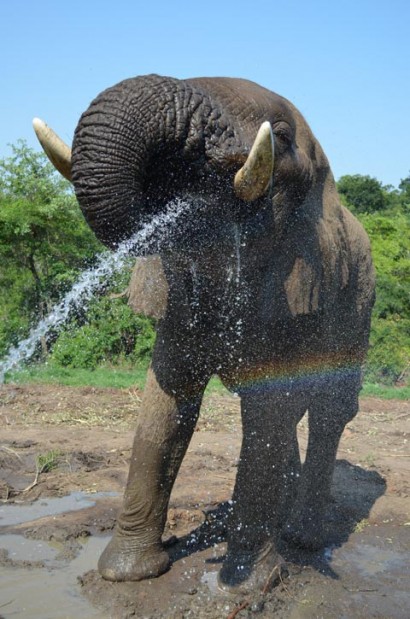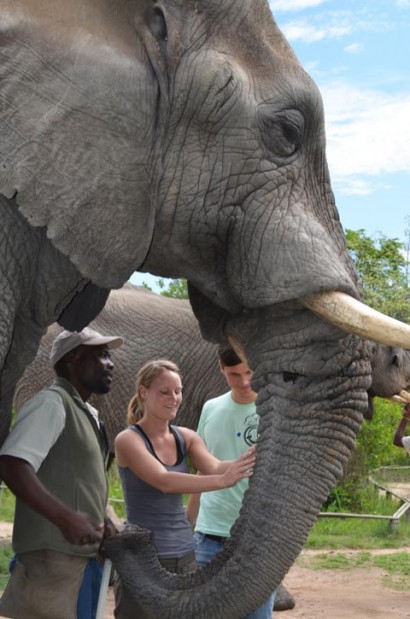Did you know? 25 Interesting Facts about Elephants
- The elephant’s foot is constructed in such a way that the animal is virtually walking on tip toe, with a tough, fatty pad of connective tissue forming the sole.
- Elephants tusks are overgrown incisors protruding from the upper jaw. They grow at a rate of 15–18cm a year, depending on their diet.
- Jan van Riebeeck’s first mention of ivory in his journal is a record of three tusks bartered from Hottentot hunters for 250g of tobacco.
- The skeletal frame of an elephant allows the animal to stand upright on its hind legs.
- Elephants wear down 6 sets of molars in a lifetime.
- Elephant herds consist of females, who are usually related, calves and young bull calves. The eldest female, called the Matriarch, most often leads the herd.
- Bull calves get kicked out of the herd when they reach about 12 years of age to join the bull “bachelor” herds or to become a solitary bull. Bull herds will only join a female herd when it is mating season, or at a waterhole.
- The average speed for charging elephants is about 35–40km per hour.
- A calf will only learn how to use its trunk properly at about six months of age.
- Elephants are known to display a deep sensitivity and awareness of death and will return repeatedly to carcasses and skeletons of deceased herd members, running their trunks gently over their remains as though paying their respects.
- Elephants spend as many as 18–20 hours a day feeding and drinking.
- An elephant generally sleeps for only three or four hours a day. Very occasionally they may lie down for an hour or so, but mostly they take short, cumulative naps, usually standing upright or leaning against a tree or termite mound.
- A fully grown adult bull’s tusks can extend to 3m and weigh as much as 100kg each. The heaviest recorded tusk weighed 102.7kg.
- Like man, elephants are usually left or right “handed” and will use one tusk almost exclusively.
- Elephants have a highly developed social structure, with family bonds, love, loyalty and intelligence.
- African elephants have four hoof nails on their front feet and three nails on the hind leg.
- The elephant brain can weigh up to 4,8kg depending on the age of the elephant.
- The small intestine is 82 feet long; the large intestine is 21 feet, and the rectum is a further 13 feet. That makes a total of 116 feet of intestine that the food has to pass through. Digestion of food can take 22-46 hours.
- An elephant’s jaws can crack open the thickest and hardest shells of fruits, releasing the seed kernels inside.
- Elephants use a wide range of sounds to express their moods and feelings.
- The gestation period in female elephants is 22 months. When the calf is born it can weigh 100kg-120kg and stands about 85cm tall.
- Another adaptation that the elephant has is its appendix. This organ is 5 feet long and its role is to process and break down proteins, starches and the simple and complex sugars that are found in its food. Larger than the stomach, this organ is where the majority of the intestinal bacteria are located that are required to digest the vegetable materials.
- The bone structure of an elephant is similar to that of human beings, for example they too have a wrist joint in the front legs as well as knee caps and ankles in the back legs. Even the shoulder blades are positioned in the same place as in humans.
- When standing on hind legs, the kidneys are in the same position as that of a human being.
- The elephant’s memory surpasses that of humans.






